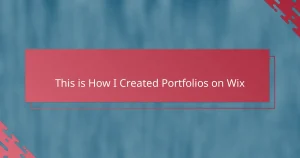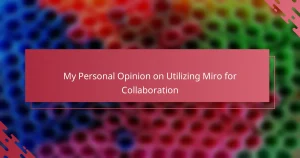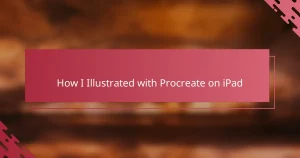Key takeaways
- Behance is a dynamic platform for creatives to showcase their work, receive quality feedback, and connect with like-minded individuals.
- Engaging with feedback effectively requires clarity in what you seek, openness to diverse viewpoints, and active appreciation of critiques.
- Regularly updating your portfolio and interpreting feedback in a context-sensitive manner fosters growth and enhances artistic development.
- Feedback should align with your artistic vision, and experimenting with it can lead to unexpected improvements and deeper insights.
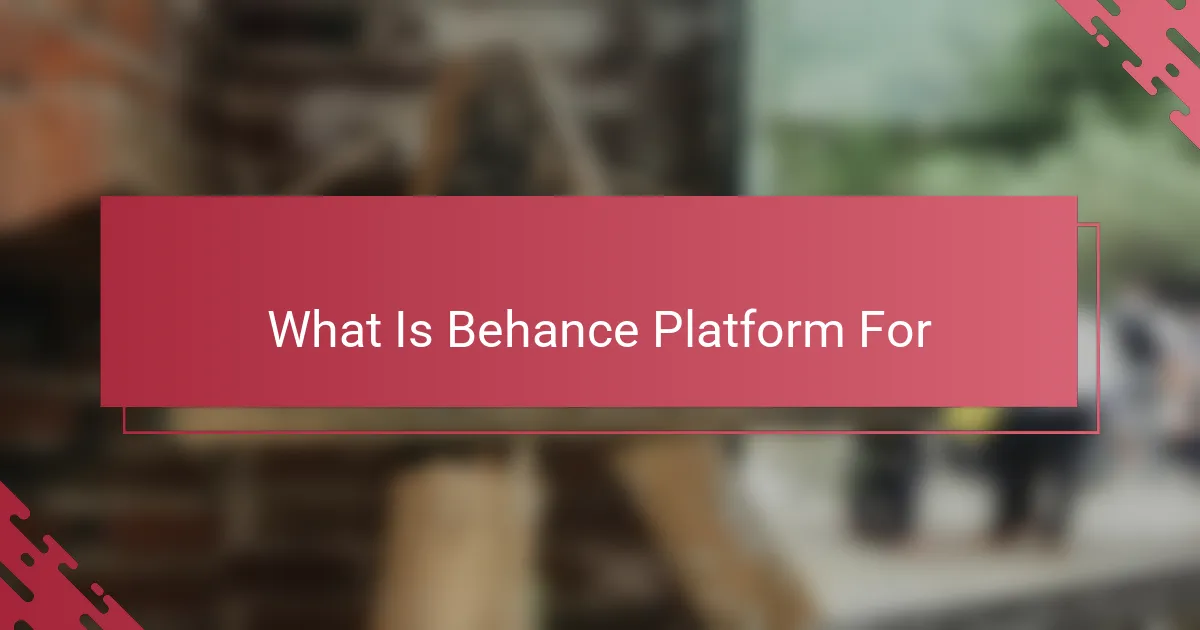
What Is Behance Platform For
Behance is a platform designed for creatives to showcase their work and reach a community that truly understands their craft. It’s more than just a portfolio site; it’s a dynamic space where artists share projects, gain inspiration, and connect with others who appreciate the nuances of visual storytelling.
When I first started using Behance, I was amazed by how easily I could browse diverse styles and techniques all in one place. It made me wonder: where else can you find such a rich blend of creative voices, all eager to give and receive feedback?
At its core, Behance serves as a global hub for creative professionals to build their presence and open doors to opportunities. It’s a place where your work isn’t just displayed—it’s experienced, discussed, and sometimes even propelled into your next big project.
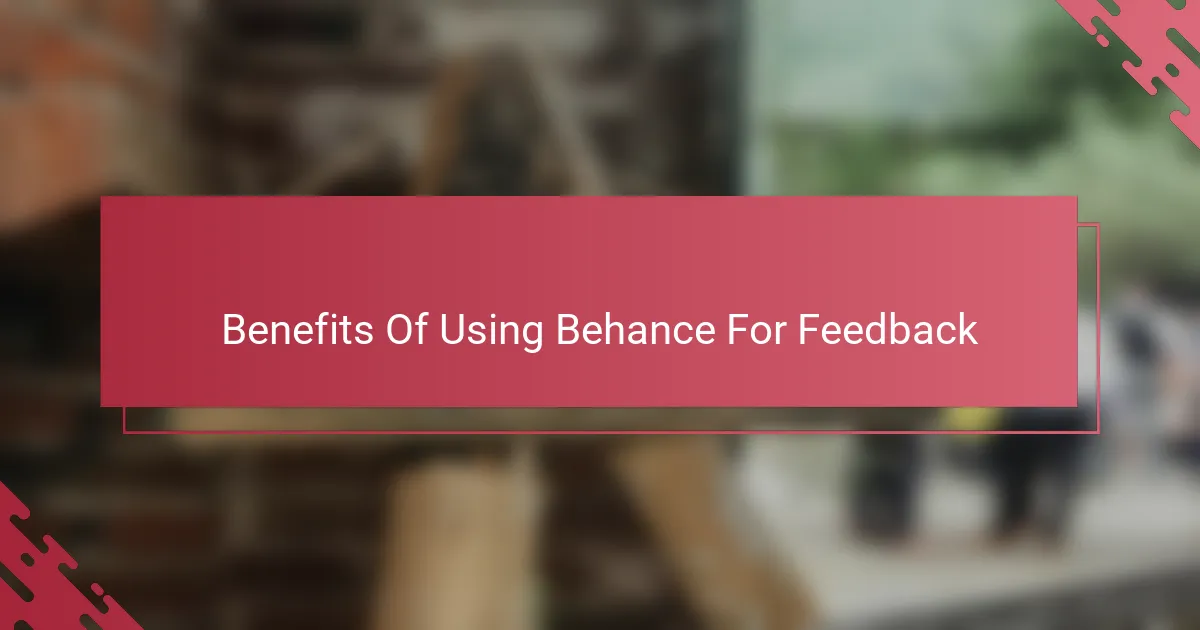
Benefits Of Using Behance For Feedback
One of the biggest benefits I’ve found using Behance for feedback is the quality of responses. The community here really consists of fellow illustrators and designers who understand the challenges behind each stroke and color choice. It feels rewarding to receive critiques that not only spot technical issues but also recognize the creative intent.
Another advantage is how quickly you get diverse perspectives. Sometimes, I’d post a piece and within hours, people from different cultural backgrounds and specialties would chime in. This range of input pushed me to see my work from angles I hadn’t considered before, which is invaluable for growth.
Have you ever wondered why some feedback feels more motivating than others? On Behance, the encouragement often comes alongside constructive advice, making the experience both uplifting and educational. From my experience, this balance keeps me eager to improve without feeling discouraged.
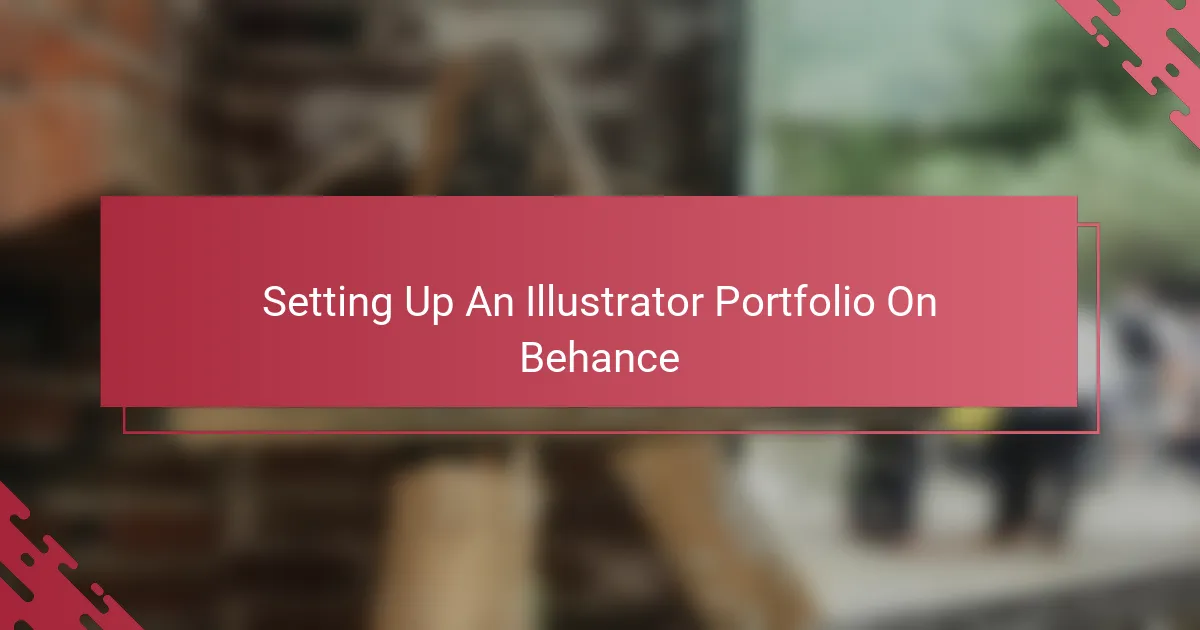
Setting Up An Illustrator Portfolio On Behance
Setting up an illustrator portfolio on Behance felt surprisingly intuitive to me. I started by carefully curating a selection of my best projects, knowing that first impressions matter a lot in this space. Have you ever hesitated over which pieces truly represent your style? That moment of choice can really define how others perceive your work.
Uploading your projects is straightforward, but the real magic happens when you take time customizing each project’s description and tags. I found that clear explanations and relevant keywords made my work easier to discover and understand. It’s like telling a mini-story for every piece—I realized that giving context invites viewers to connect more deeply with your art.
One tip I learned along the way is to keep your portfolio updated regularly. After I added newer illustrations, I noticed more engagement from the community, which felt incredibly motivating. Isn’t it encouraging when your portfolio starts sparking conversations and not just sitting quietly? On Behance, keeping your space fresh really helps keep that momentum going.
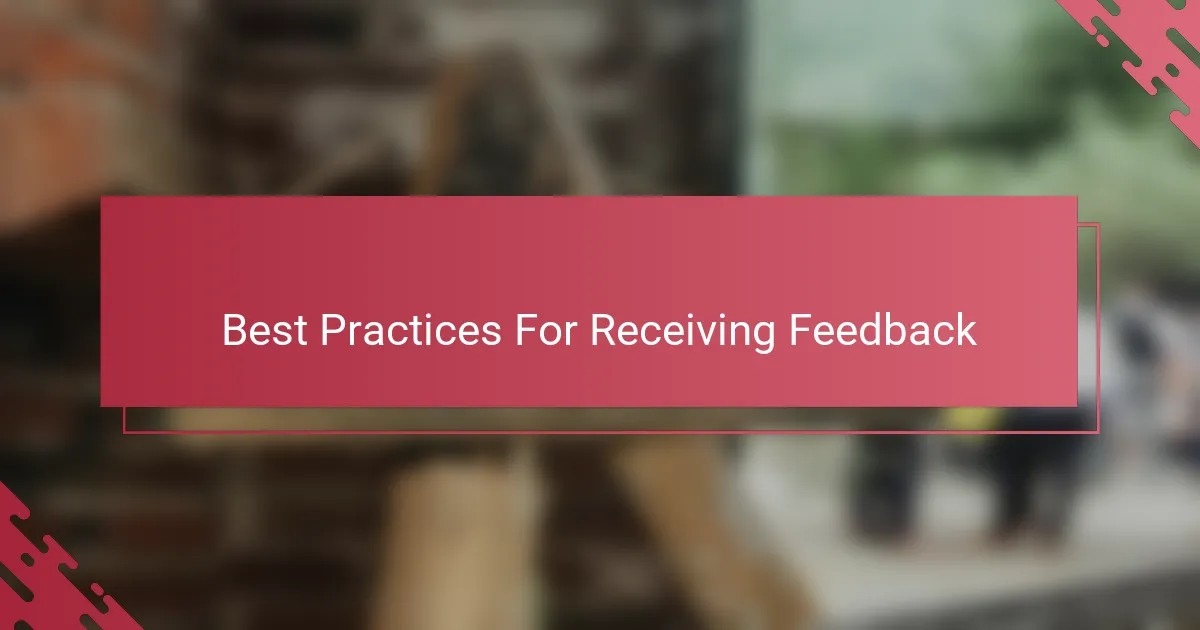
Best Practices For Receiving Feedback
When I first started seeking feedback on Behance, I quickly realized that being clear about what kind of input I wanted made a huge difference. Have you ever posted your work hoping for detailed critiques, only to get vague comments? Specifying whether you’re looking for advice on composition, color, or storytelling invites more focused and helpful responses. This simple step turned my feedback experience from frustrating to truly valuable.
Another thing I learned is to keep an open mind, even if some critiques initially feel tough to digest. It’s natural to feel protective of your work, but I found that embracing diverse viewpoints often led me to solutions I hadn’t considered. When someone pointed out a small inconsistency in my line work, it stung at first—but fixing that detail elevated the whole piece in a way I’m really proud of now.
Lastly, I noticed that showing appreciation and engaging with those who take time to comment encourages a positive feedback loop. Have you ever ignored a thoughtful critique without responding? I used to, but when I started thanking people and asking follow-up questions, the community grew more supportive and comments became richer. Behance isn’t just about posting art—it’s about building connections, and that makes all the difference in how feedback helps you grow.
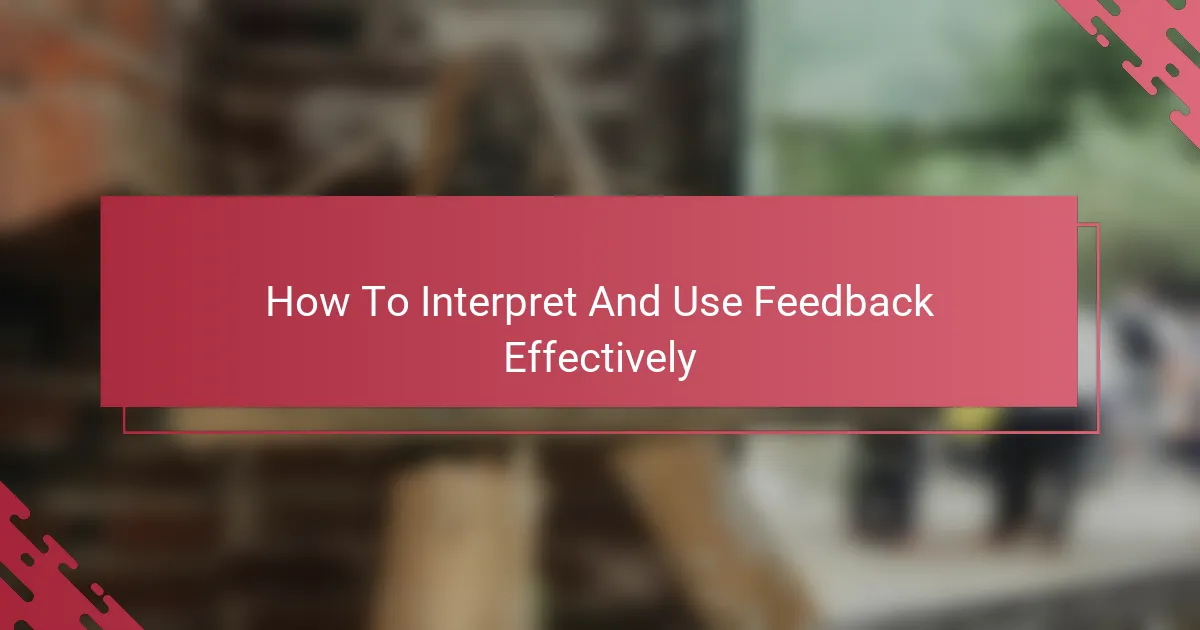
How To Interpret And Use Feedback Effectively
Interpreting feedback can sometimes feel like decoding a puzzle, but I’ve learned it’s all about tuning into the intention behind the words. When someone points out a flaw or suggests a change, I ask myself: Is this about improving the clarity of my message, or refining a technical skill? This mindset helps me separate useful critiques from noise, so I don’t take things personally and stay focused on growth.
Using the feedback effectively means putting it into action, even when it feels challenging. I recall a time when a comment about my color choices made me rethink an entire palette—but after experimenting, I discovered a new way to make my work pop. Have you noticed how real progress often starts with discomfort? That willingness to try something new is what turns advice into improvement.
I also make it a habit to revisit past feedback as I evolve. Sometimes, a suggestion that didn’t resonate at first suddenly makes perfect sense months later. Isn’t it interesting how timing can change our perspective? By keeping an open, flexible approach, feedback becomes a tool I return to again and again, rather than a one-time event.
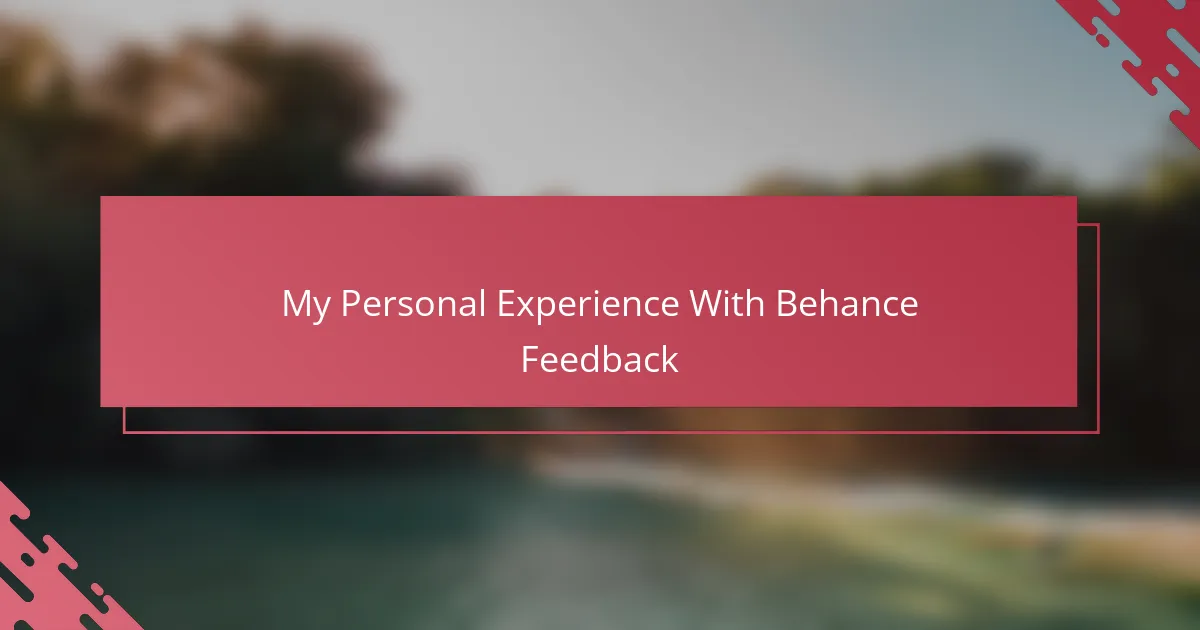
My Personal Experience With Behance Feedback
When I started sharing my illustrations on Behance, I was a bit nervous about opening up my work for critique. But to my surprise, the feedback I received felt genuine and thoughtful—it was clear these were people who cared about pushing creative boundaries, not just tossing out empty compliments. Have you ever felt that mix of excitement and apprehension before showing your art? That’s exactly how I felt, and the community’s responses made the experience rewarding rather than intimidating.
One particular moment stands out to me: I posted a piece where I struggled with lighting and shading. Within a day, a few experienced illustrators pointed out subtle inconsistencies and offered tips that I hadn’t considered before. Their kindness combined with technical advice helped me see my work in a new light—literally and figuratively—and motivated me to keep refining my style.
I also appreciate how Behance’s feedback often sparks deeper conversations. Sometimes someone leaves a comment that challenges me to explain my creative choices, which then leads to insightful exchanges. Those moments make me realize that feedback isn’t just about what’s right or wrong; it’s about connecting perspectives and growing together as artists. Have you ever had that kind of meaningful dialogue around your work? That’s been a highlight of my experience on Behance.
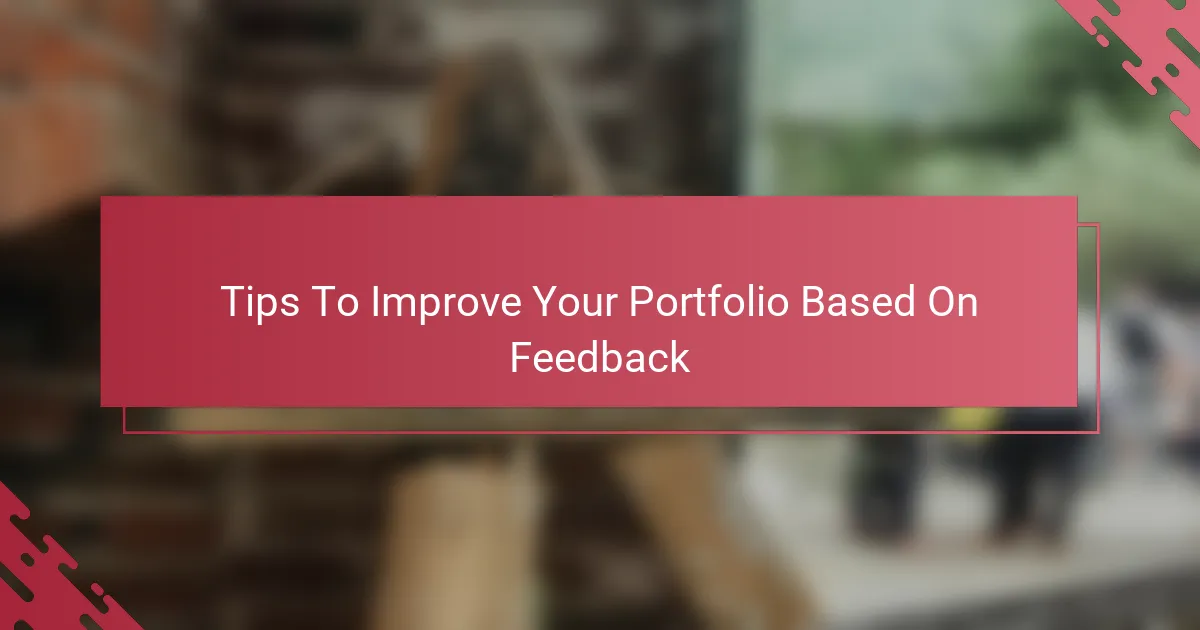
Tips To Improve Your Portfolio Based On Feedback
When I first started applying feedback from Behance to my portfolio, I realized that not all suggestions need to be taken at face value. Have you ever felt overwhelmed by too many different opinions? I found it helpful to prioritize feedback that aligns with my artistic vision and goals, rather than trying to please everyone. This approach made improvements feel more authentic and manageable.
Another tip I’ve embraced is to experiment boldly with the feedback before committing to permanent changes. For example, when someone recommended adjusting my color palette, I played around with a few variations rather than immediately overhauling the whole piece. This trial-and-error phase often led to discoveries that enhanced my work in unexpected ways, and it turned the process into a creative opportunity rather than a chore.
Lastly, I learned the value of revisiting feedback after some time has passed. Sometimes, a critique that initially seemed minor or confusing suddenly clicks after I’ve grown as an artist. Have you experienced that moment when what once seemed like nitpicking reveals itself as a crucial insight? Keeping an open mind over the long term has been key in evolving my portfolio steadily and thoughtfully.
